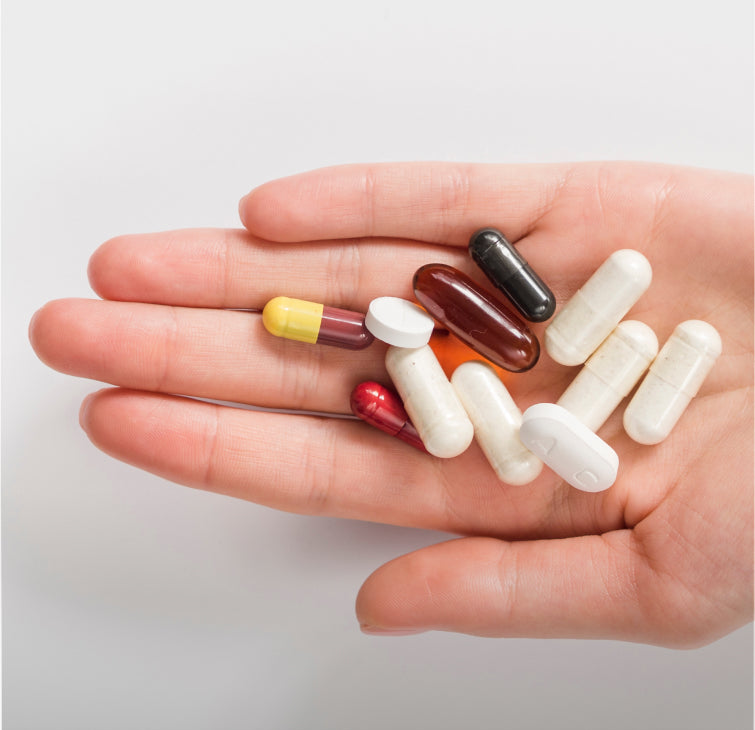Vitamin K is not a star of micro-nutrition, however, it plays an essential role in the prevention of osteoporosis , the good maintenance of cardiovascular tissues and of course in blood coagulation .
We must therefore not underestimate its importance and ensure satisfactory daily intakes.
In this article, we present the main characteristics of vitamin K, its benefits and where to find it .
The role and forms of vitamin K
Vitamin K is a vitamin that was identified in the 1920s/1940s.
Its discovery also earned a Nobel Prize in Medicine in 1943 for the two researchers who were able to isolate and synthesize it (Dam and Doisy).
This vitamin exists in several molecular forms with nevertheless equivalent properties and all belonging to the Quinones group.
- Vitamin K1: or phytometadione is produced by plants.
- Vitamin K2: or menaquinone which is synthesized by bacteria.
These two forms are fat-soluble: soluble in oils, but not in water.
We must also mention vitamin K3, a synthetic form (menadione) which is no longer used for human food because it frequently generates undesirable side effects (nausea, etc.).
What are the Benefits of Vitamin K?
Vitamin K is essential for the blood clotting process .
Its name is also taken from the word “Koalution” as it was called in the first German publication on its discovery.
Until the beginning of the 1960s, no role was known other than in blood coagulation.
Advances in research have gradually shed light on the much greater and broader properties of Vitamin K.
We know that today it is essential for cell growth and renewal and particularly involved in the prevention of Osteoporosis (bone fragility). It is also involved in good cardiovascular health, just that!
Vitamin K intake requirements
Vitamin K is necessary on a daily basis for the proper maintenance of body tissues and quite logically, daily needs are directly proportional to body weight.
The Sufficient Intakes defined by ANSES are as follows:
- 5 micrograms (µg) for newborns - up to 6 months.
- 30 to 45 micrograms (µg) from ages 4 to adolescence.
- 75 micrograms (µg) in adults.
Vitamin K is absorbed in the intestine in the presence of bile salts.
The body's reserves do not exceed a few days, which explains the need for regular intake.
It is important to note that there is no risk of overdosing vitamin K, excess quantities are easily eliminated by the body.
These intakes only concern vitamin K1 requirements because vitamin K2 intakes are more difficult to estimate: see below.
What vegetables and sources contain vitamin K?
- Vitamin K1 can be provided through diet and supplementation.
It is mainly found in green vegetables (collard greens, asparagus, spinach, broccoli, etc.) and soybean oil. It resists cooking temperatures well and not being soluble in water, it does not dilute in cooking water.
- Vitamin K2:
It is found in certain fermented foods such as sauerkraut and unpasteurized cheeses. It is also found in animal storage tissues such as liver, marrow, or even fat.
It can also be synthesized by E.coli bacteria in the intestinal microbiota, in proportions that are always difficult to estimate.
The risks of vitamin K deficiency
Despite its presence in many foods and its good resistance to cooking, it is surprising to observe intakes of vitamin K that are frequently too low in Western populations.
The University of Maastricht in the Netherlands, which is at the forefront on this issue, nevertheless estimates that 40% of the Dutch population have too low intakes of vitamin K.
Biochemist Cees Vermeer even considers that a third of adults have worrying deficiencies, as harmful “ as smoking two packs of cigarettes a day” .
This clearly illustrates the increasingly recognized role of vitamin K in the proper maintenance of cardiovascular tissues.
An acute vitamin K deficiency will be mainly noticed by bleeding (particularly frequent from the nose), linked to non-coagulation of the blood.
Are sub-deficiencies (intakes of less than 50 µg in adults) undetectable by clinical signs: only a blood test can establish this.
It is these long-term sub-deficiencies that must be prevented in the general population, including children.
The origin of the deficiency can be an unbalanced diet , poor in plants and fermented natural products or, more rarely, absorption disorders:
- Medical treatment, including antibiotics
- Pancreatic dysfunction. etc.
Vitamin K in Argalys formulas: Multivitamins
We very logically find vitamin K1 in our Argalys Essentials Multivitamins and Minerals formula, designed to facilitate and secure micronutrient intake for everyone (from 8 years old) and for all diets.
One capsule of our Multivitamin and Mineral supplement provides 75 µg of vitamin K1, or 100% of the RDA.
This is therefore an additional reason to associate our formula with your daily life!
Our Essentials rich in vitamin K1:

Discover the Multi!
 04 74 03 98 80
04 74 03 98 80









